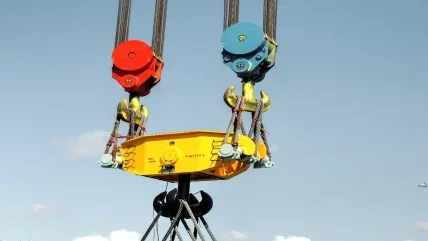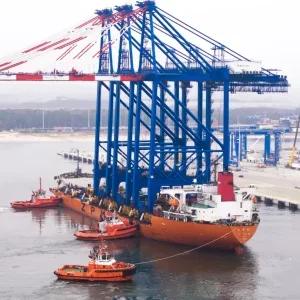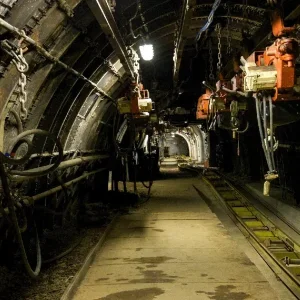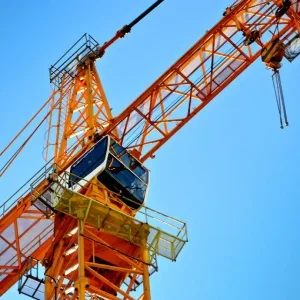
Hoist and crane sales have picked up in Thailand, Malaysia, Indonesia, Vietnam, Singapore and the Philippines during the past few years. While some markets such as Thailand and Malaysia bounced back in 1999, others such as Indonesia and the Philippines have recovered more slowly.
Still, the number of units supplied is unlikely to return to the peak level recorded in the mid-1990s, because of China’s emergence as a source of low priced manufactured goods exports.
Thought to be the leading supplier of hoists in the region, Demag Cranes and Components supplies Southeast Asian markets through MHE-Demag, a joint venture holding company set up in 1972 with Jebsen & Jessen (SEA) Pte Ltd in Singapore.
MHE-Demag is the holding company for Demag’s hoist and crane operations across the region. In each country, a local minority shareholder normally also participates in the business venture.
Since then the joint venture has expanded to number 10 operating companies with 16 sales offices.
In addition, six crane building plants are operating in six Singapore, Shah Alam in Malaysia, Bangkok, Thailand, Surabaya in East Java, Indonesia, the Philippines capital Manila and, most recently, Ho Chi Minh City in southern Vietnam.
Demag sold its 10,000th crane in Southeast Asia in 1999. Since then the company has sold a further estimated 2,000 hoists, lifting total sales in the region to about 12,000 cranes.
In 2004 the Southeast Asian market for hoists was estimated at about 2,500 units of all sizes, a similar figure to the previous year. Of the total number installed throughout the region, about 65% are thought to be models under 10t (11 US tons).
“The more developed countries use the smaller cranes as they use more hoists in total, including maintenance workshop hoists for convenience and efficiency,” said an MHE-Demag employee who did not wish to be named.
“Hoist sales are growing in Southeast Asia as slowly awareness of the environment, health and safety is growing. Multinational companies are ahead but more local companies now realise that it can help to install a chain hoist if staff are off work sick because of back problems. This awareness affects sales of other lifting equipment as well.”
But the growth of China has taken away work from Southeast Asia.
Singapore, for example, has witnessed the lower end of its electronics industry transfer to China, forcing the island republic to focus on more advanced industries where it still offers a competitive advantage to multinational corporations.
“Singapore was Demag’s biggest market, but now has changed to promoting biotech industries, so Malaysia has become the largest Demag market,” the employee said. As a result, in July 2002 MHE-Demag moved its regional office from Singapore to Shah Alam, Malaysia.
“Thailand is growing dramatically but Malaysia has been slowing.’ He said that both Indonesia and the Philippines have grown, but the Indonesian market has grown slowly and the Philippines has grown in spurts.
“Indonesia had more government investment before but now has more private projects. Thailand is mainly private investment, mostly in the manufacturing sector. Thailand is a hot market now.”
Vietnam recently has joined the ranks of Southeast Asia’s fast-growing economies. Although less developed than many of its neighbours, Vietnam’s industrious, low cost labour force has attracted investment from other Asian countries that do not wish to invest solely in China.
MHE-Demag has operated in Vietnam since 1996 through a representative office in Ho Chi Minh City in the south. With business developing quickly recently and Vietnam’s long term economic growth prospects looking bright, MHE-Demag opened its sixth crane factory in Southeast Asia in Vietnam’s southern Binh Duong province in May 2004. Located in the Vietnam Singapore Industrial Park, the 1,500 square metre workshop is designed to build up to 70 cranes a year.
“We did not want to start crane businesses in the north and south at once,” the Demag employee said. “There is enough business in the south to support the plant and there is room for production expansion.”
“Vietnam is a communist country, so there is still government involvement in the economy. Steel coils are being made. Also, steel and cement are needed for infrastructure projects.”
The automotive industry
Car manufacturers are expanding – like Ford in the Philippines and Mercedes in Malaysia, the MHE-Demag employee said. “We supply KBK overhead rail systems with 1t or 2t hoists to hold power tools and air spray guns. We supplied Ford with a new line in the Philippines in 2003 with 20 hoists ranging from 500kg to 2t to build a sports utility vehicle. Since Ford started in the Philippines we have continuously supplied them with kits. We see this development in the whole of Southeast Asia.
Other car manufacturer customers ordering the KBK system are believed to include Proton in Malaysia and at least one Indonesian automobile maker.
In Thailand, recent contracts from vehicle manufacturers include a 10t/5t double girder crane supplied to Toyoda Gosei, a plastic and rubber component supplier for Toyota and Isuzu vehicle plants in Thailand. The crane has a 17m operating span and is used to move different moulds.
In the Philippines, Asian Aerospace has purchased four cranes with underhung hoists for two service hangars in Clark Economic Zone in Pampanga near Manila.
Asian Aerospace is the authorised service centre and distributor for Lockheed Martin, Bell, MD and Kingair aircraft in the Philippines. The company also maintains C130 aircraft for the Philippines airforce.
Originally three 2t hoists were supplied for lifting seats and other parts during service of small aircraft and helicopters
However, after initially installing two 2t overhead cranes 10m apart, the client discovered that some larger planes could not fully enter the hangar as the tail fin was blocked by the low height of the crane gantries. Asian Aerospace then asked MHE-Demag to add a third underhand portal crane near the hangar entrance to service high tail fins on larger aircraft.
MHE-Demag also supplied two 2t cranes for the Lufthansa Technic Airbus service centre in Manila where the lattice steel roof of the hangar was unable to support heavy hoists.
Cement plant operators, for example, often require new hoist systems when undertaking plant upgrade or expansion projects.
In the agricultural sector, processing plants for palm oil, sugar cane and other commodities also purchase new cranes when expanding their activities.
“Sugar mills upgrade constantly as they only mill sugar cane for three months each year,” the MHE-Demag employee said. “Many mill owners upgrade their steel structures or their hoists. That’s where we are good, as our designers can judge the steel structure loading capacity. Above 2.5t capacity we recommend that clients use a wire rope hoist.”
In Singapore, MHE-Demag recently won contracts to supply five gantry cranes to assist the current excavation of a deep sewerage pipeline system that runs about 35 metres below ground. The company also has supplied gantry cranes for use in constructing four new light railway stations as part of Singapore’s Circle Line rail extension programme.
In the Philippines, gantry cranes from 20t to 30t have been supplied for a number of highway construction projects, while an earlier contract involved supplying Voest Alpine with an 85t gantry crane for the San Rocce hydropower dam project to lift and weld the steel tail race tunnel pipe. The client later moved the crane to a project in another country.
Southeast Asia’s large oil and gas exploration and production industry also demands overhead cranes. Overhead travelling cranes ranging from 5t to 20t are normally ordered for workshops building steel and other structures for use on oil and gas rigs. The high price of oil has helped push up orders. Singapore is the base for many companies serving the Southeast Asian hydrocarbon exploration industry.






